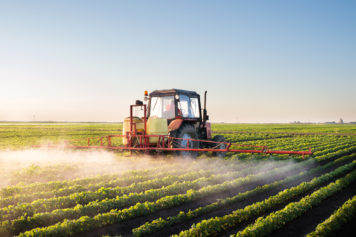When deciding whether to manufacture a new agricultural chemical, companies need to determine if their product will be subject to registration under the Federal Insecticide, Fungicide, and Rodenticide Act (FIFRA). Registration is a costly, technically demanding, and prolonged process that, in conjunction with the sales forecast, may result in the firm deciding not to manufacture the product at all. Also, determining FIFRA applicability is not always straightforward, and the uncertainty inherent in the process may weigh against manufacture.

The EPA’s Office of Chemical Safety and Pollution Prevention is addressing these and related concerns in a new draft guidance document on a category of agricultural products called plant biostimulants (PBSs). According to the Agency, some PBSs are exempt from FIFRA regulation, while others are not because they fit into the FIFRA definition of plant regulators.
The EPA is inviting comments on the draft guidance until May 28, 2019 (March 27, 2019, Federal Register (FR)).
Naturally Occurring Ingredients
The Agency notes that PBSs are a relatively new but growing category of products containing naturally occurring substances that aid healthful growth while not providing nutritionally relevant fertilizer benefits to the plant.
The potential confusion with PBSs starts with the absence of a definition, either under FIFRA or in the EPA’s regulations. While the draft guidance does not offer a definition—which can only be developed through rulemaking—the Agency states that “generally speaking,” a PBS is “a naturally-occurring substance or microbe that is used either by itself or in combination with other naturally-occurring substances or microbes for the purpose of stimulating natural processes in plants or in the soil to, among other things, improve nutrient and/or water use efficiency by plants, help plants tolerate abiotic [i.e., not associated with living organisms] stress, or improve the physical, chemical, and/or biological characteristics of the soil as a medium for plant growth.”
Plant Regulators
While that general description may not suggest that PBSs are pesticides, which are intended to prevent, destroy, repel, or mitigate pests and are subject to FIFRA, the definition of a pesticide under FIFRA is broad. Included under that definition are plant regulators, which FIFRA does define as “any substance or mixture of substances intended, through physiological action, for accelerating or retarding the rate of growth or rate of maturation, or for otherwise altering the behavior of plants or the produce thereof.”
Based on the plant regulator definition, many PBS products and substances may be excluded or exempt from regulation under FIFRA because of their intended uses as plant nutrients (e.g., fertilizers), plant inoculants, soil amendments, and vitamin-hormone products. Other PBS products will not involve EPA oversight because they do not fit within the specific FIFRA definition of how a plant regulator functions. A key consideration is the claim made on the product label. In other words, regardless of the chemical composition of the PBS, if the label claims the PBS falls within the definition or mode of action of a plant regulator, then the PBS must be registered as a plant regulator.
Altering the Behavior of Plants
Based solely on the FIFRA definition, a naturally occurring PBS would be considered a plant regulator, a product label claim would be considered a plant regulator claim, and FIFRA registration would be required if the PBS:
- Accelerates or retards the rate of plant growth; these modes of action would cover substances that enhance/promote/stimulate fruit growth and development; promote stem elongation; stimulate roots/shoots; and stimulate cell division, cell differentiation, and cell enlargement.
- Accelerates or retards the rate of plant maturation; these modes of action would cover substances that accelerate/control/delay abscission/development/ripening/senescence; induce/promote/retard/suppress flowering; and induce/promote/retard/suppress bud break.
- Alters the behavior of plants; these modes of action would include substances that improve plant/tree shape/structure; control suckering; and inhibit/promote sprouting.
- Alters the produce of plants; these modes of action would include substances that enhance/promote crop/fruit/produce color/development/quality/shape and enhance/promote fruit growth and development.
The guidance also lists 25 EPA-registered naturally occurring plant regulator active ingredients with modes of action and associated product label claims that are consistent with the FIFRA definition of a plant regulator.
Exclusion Categories
Finally, to be categorized as a plant regulator, the substance or mixture of substances could not be listed under one of the exclusion categories at 40 CFR 152.6(f) and (g) as vitamin-hormone products, plant nutrients, plant inoculants, or soil amendments or under 40 CFR 152.8(f) as a fertilizer. The guidance provides tables with examples of PBSs that are considered nonpesticidal and are, therefore, exempt from FIFRA registration.
